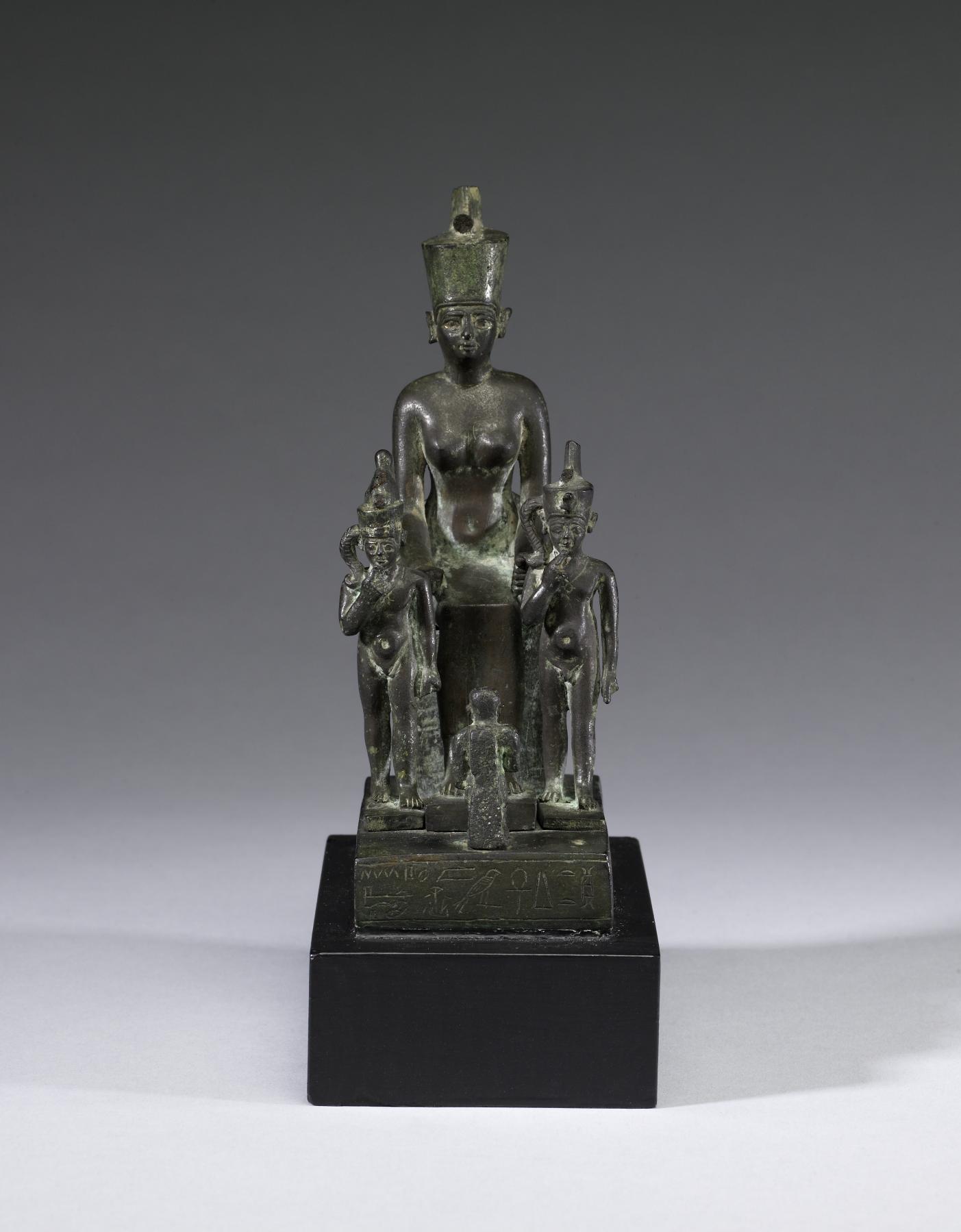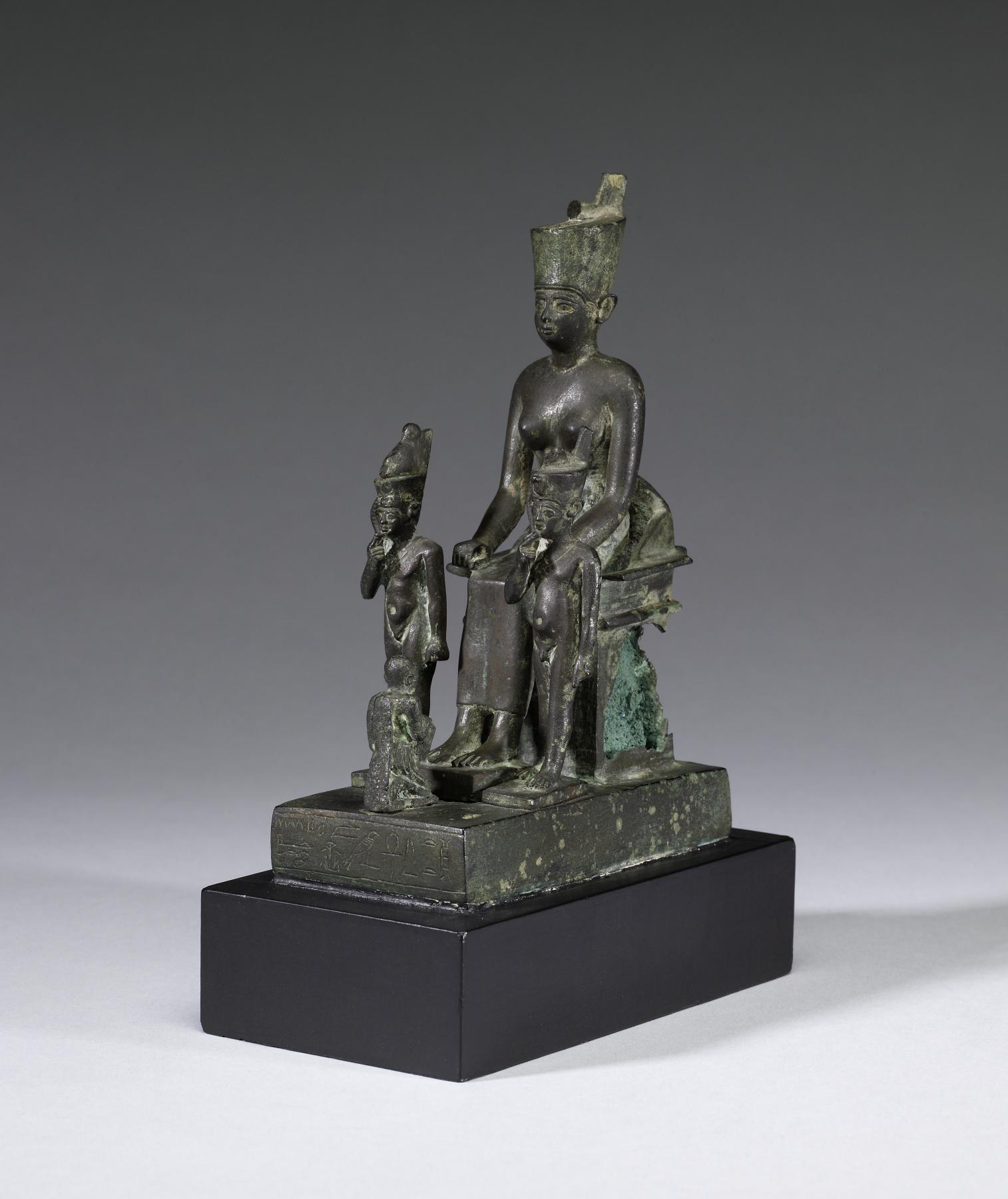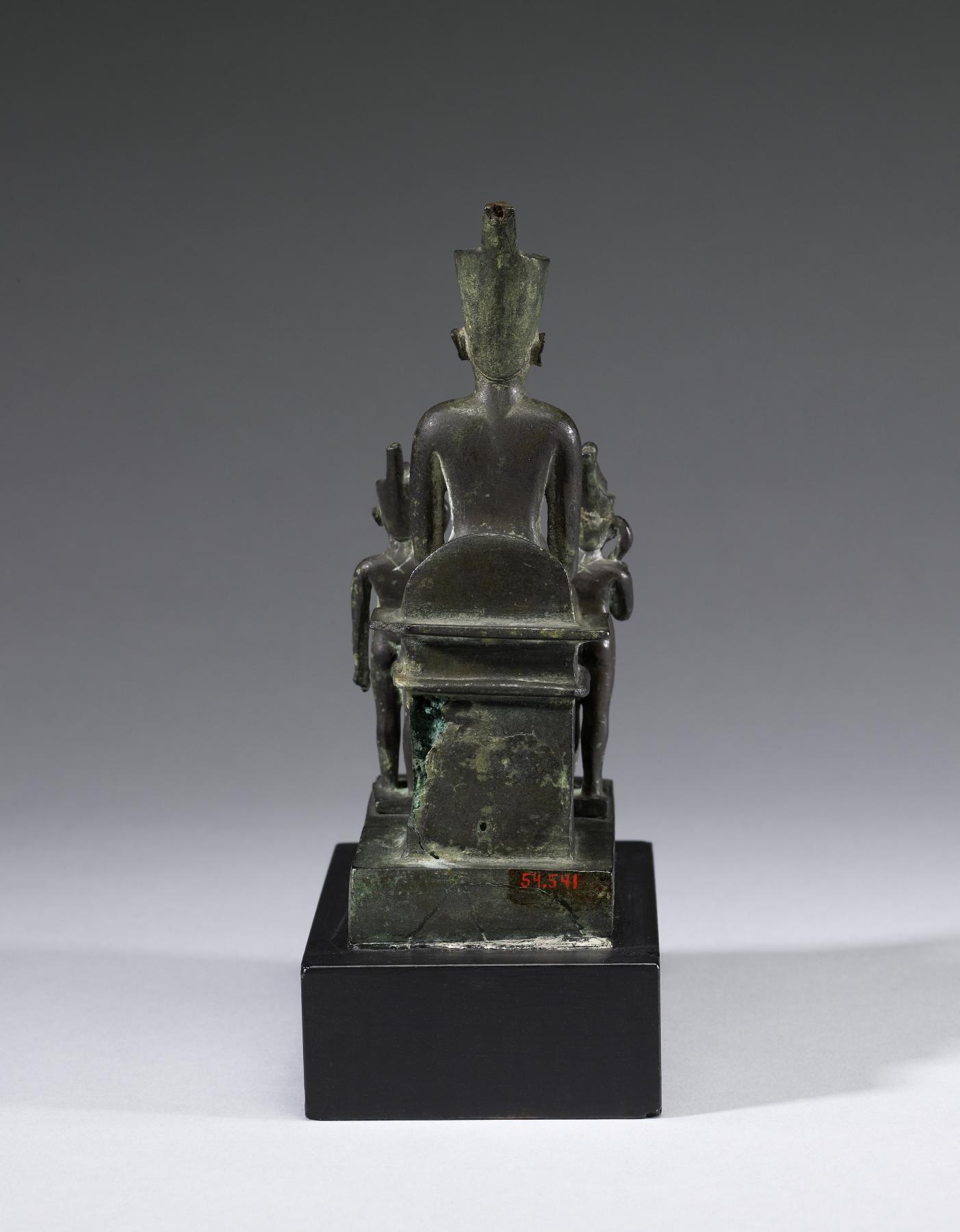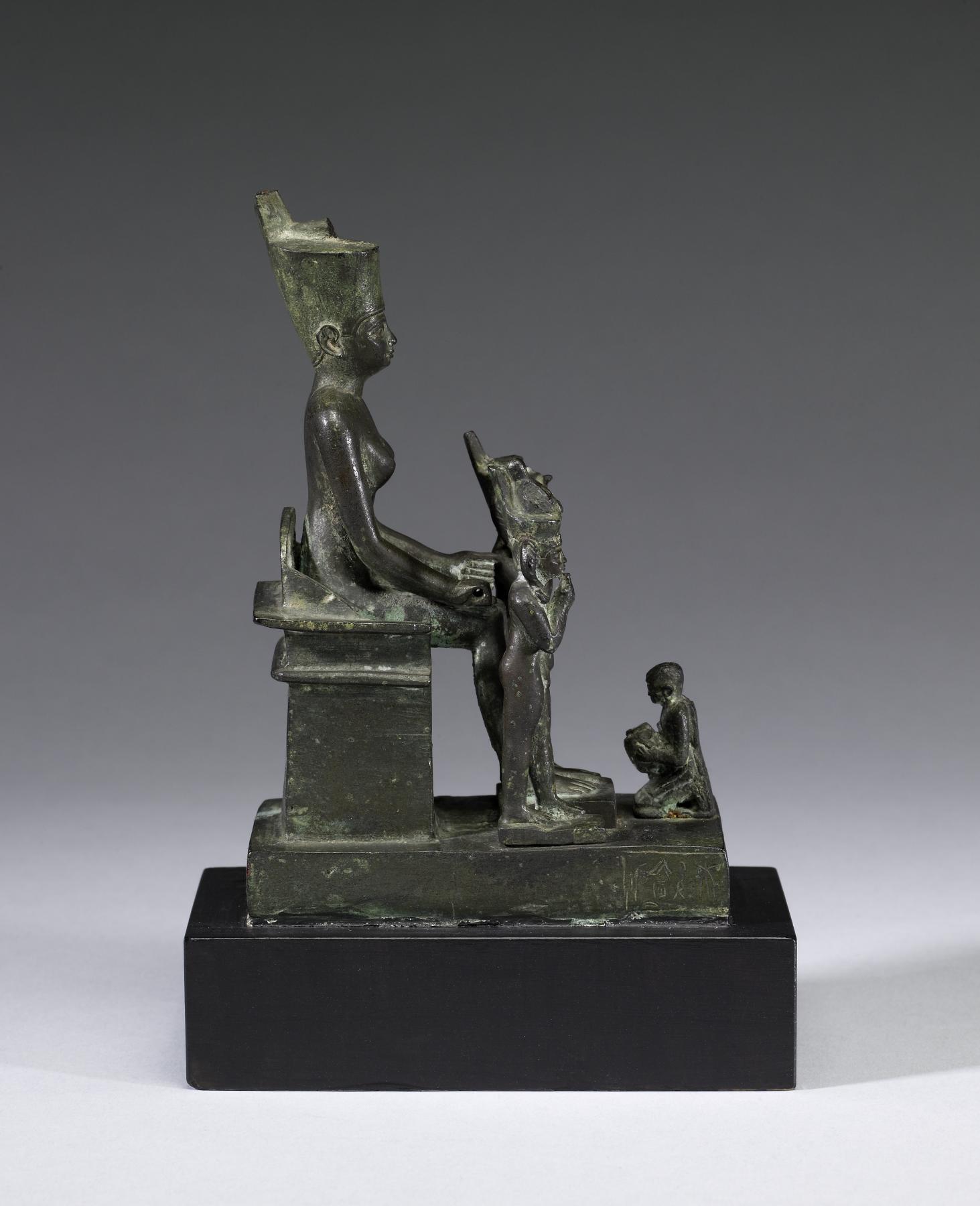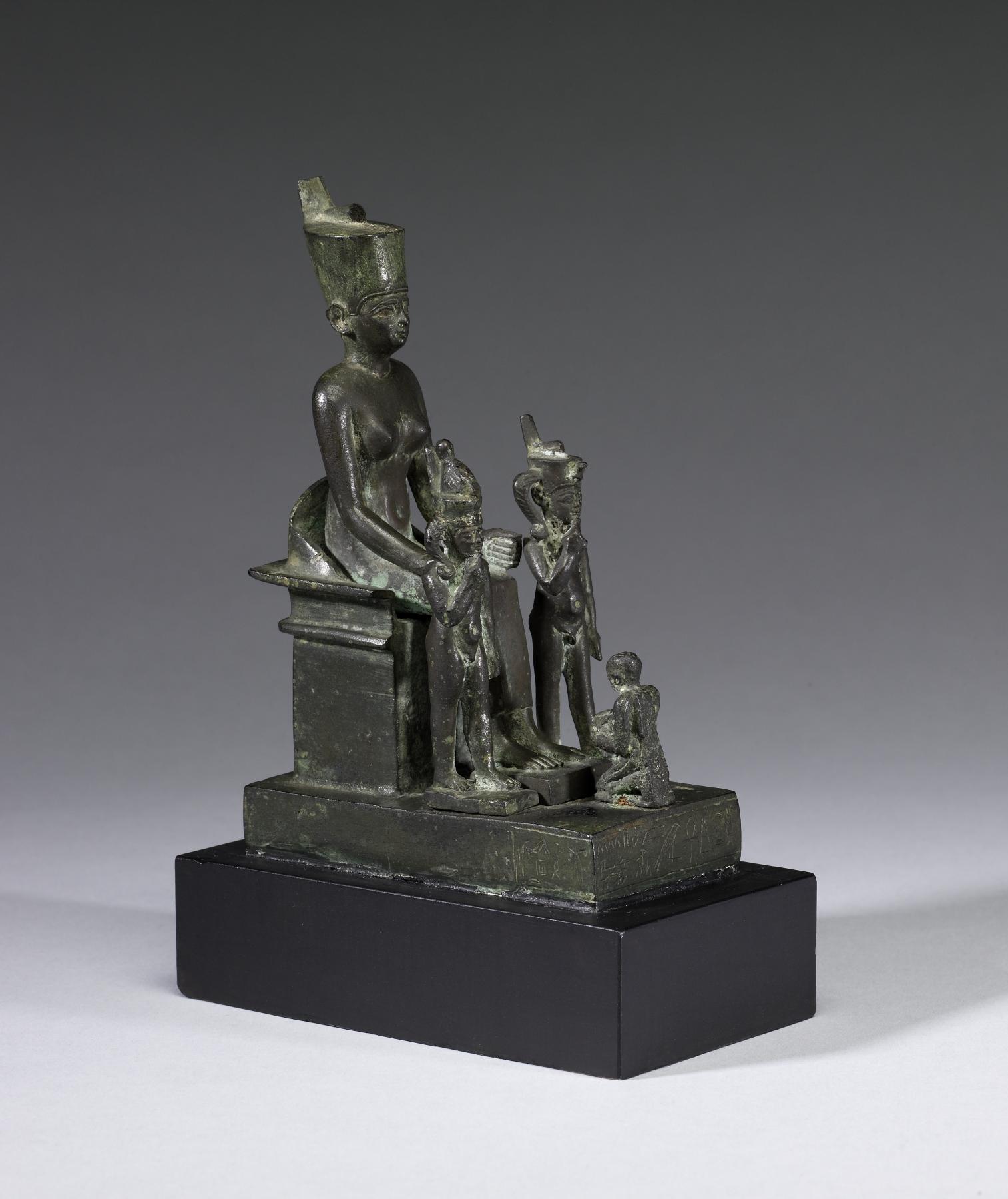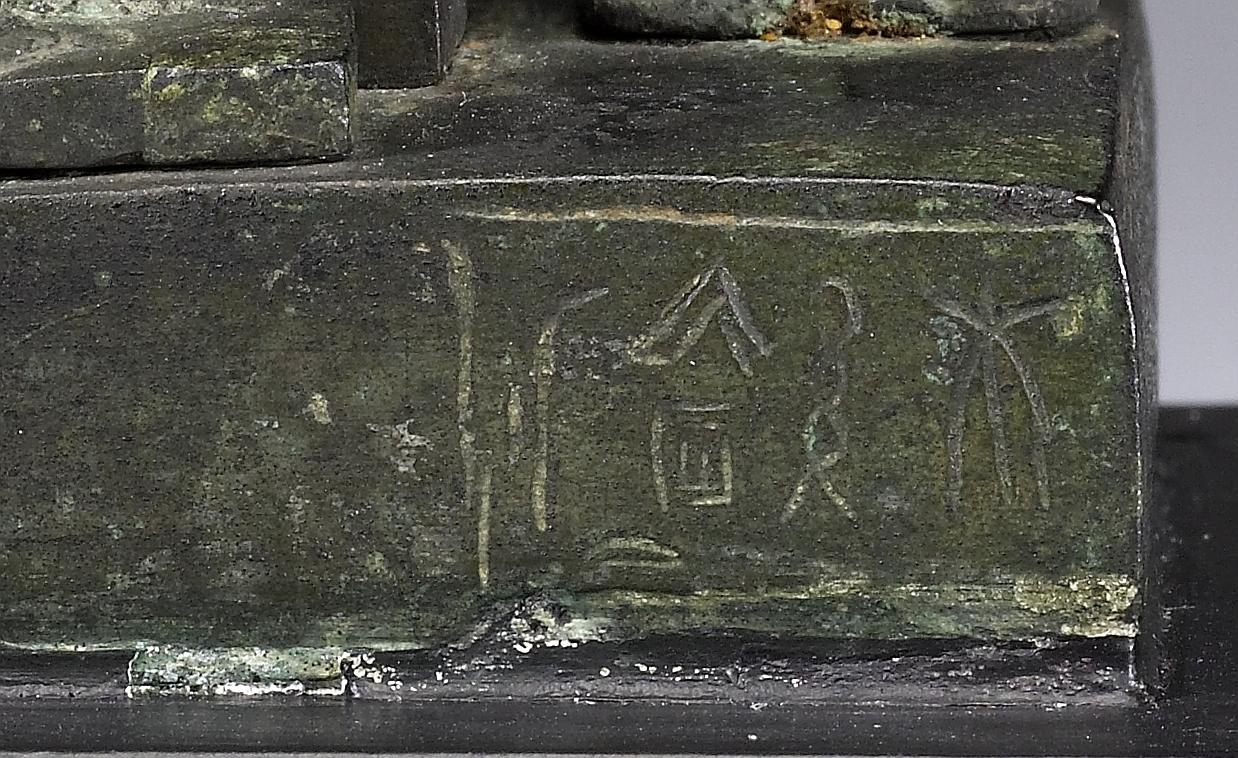Figure Ensemble of the Goddess Neith with Horus the Child (twice) and a Worshiper
(Ancient Egypt and Nubia )
During the 1st millennium BCE, individuals could receive permission to donate not only single figures of a specific deity to a temple but also more complex group arrangements of one or several gods with the donor himself as a worshiper or bringer of offerings. This ensemble exhibits the goddess Neith seated on a throne, accompanied by two figures of the juvenile Horus (one with double-crown here for Upper Egypt, and one with the lower Egyptian crown). The donor is depicted as the kneeling worshipper in front of the feet of the goddess.
Inscription
Provenance
Provenance (from the French provenir, 'to come from/forth') is the chronology of the ownership, custody, or location of a historical object. Learn more about provenance at the Walters.
Henry Walters, Baltimore [date and mode of acquisition unknown]; Walters Art Museum, 1931, by bequest.
Exhibitions
| 2006-2007 | Daily Magic in Ancient Egypt. The Walters Art Museum, Baltimore. |
| 2003-2004 | Secret Signs: Egyptian Writing. The Walters Art Museum, Baltimore. |
Conservation
| Date | Description | Narrative |
|---|---|---|
| Examination | examined for exhibition |
Geographies
Egypt (Place of Origin)
Measurements
H: 5 13/16 x W: 2 5/16 x D: 3 13/16 in. (14.7 x 5.8 x 9.7 cm); H with base: 7 1/16 x W: 2 3/4 x D: 4 13/16 in. (17.9 x 7 x 12.2 cm)
Credit Line
Acquired by Henry Walters
Location in Museum
Accession Number
In libraries, galleries, museums, and archives, an accession number is a unique identifier assigned to each object in the collection.
In libraries, galleries, museums, and archives, an accession number is a unique identifier assigned to each object in the collection.
54.541

